How do deadlifts apply to MTB?
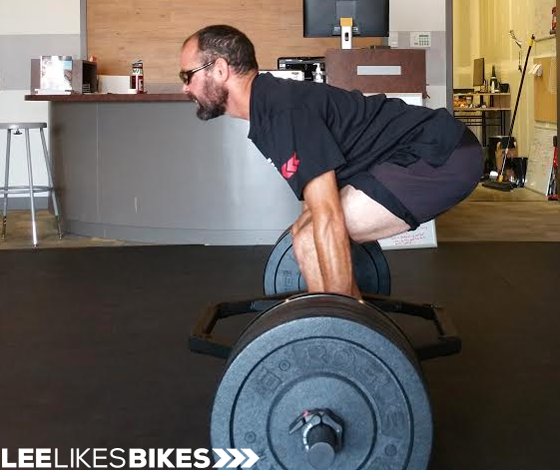
Over the past few weeks I’ve been posting deadlift photos and videos on social media, and people are asking:
How do deadlifts apply to mountain biking?
Great question!
For years I’ve been practicing light, complex versions of the deadlift motion: single leg, squat rows, “dead rows,” etc. Learning this movement pattern has improved my riding and made me less useless in daily life.
The “dead row” from the F6 off-bike training program. This program is dsigned to help MTBers train anywhere with minimal equipment.
After a couple seasons of corrective core work (huge thanks to Dee Tidwell at Enduro MTB Training for saving me from decrepitude), I’m strong enough to pursue heavier loads.
In addition to managing my shoulder injuries, the guys at REVO Physiotherapy & Sports Performance in Boulder, CO are helping me get as strong as possible (without getting hurt). With their supervision I’m learning a lot and having fun.
Lifting more than ever — perfectly.
Since I’m using a trap bar rather than a straight bar, this is officially considered a hex squat.
Generally great things about lifting heavy stuff
We humans are built to lift, carry, chase, flee, jump, pull, push, pump and jump. It’s in our DNA.
Strength training:
Improves bone density.
Increases levels of testosterone and human growth hormone.
Makes you stronger and more durable.
Improves coordination and body control.
Increases muscle mass which means increased calorie burning.
Can be done just about anywhere, with minimal equipment. See the F6 off-bike training program.
Is handy on moving day and airport day (in my opinion, the two great tests of overall readiness).
Is freakin’ bad ass.
The older you are, the important strength work becomes. Do you want to wither and die? Not yet damnit!
Generally great things about dead lifts
In a deadlift, you generate massive power by driving your hips forward while stabilizing all the way from your hands to your feet. We’re talking legs, hips, midsection, back and shoulders — all the big movers — all at once.
Does this deep hip hinge remind you of the MTB attack position? In a deadlift you drive from this position to standing upright.
Humans are built to drive power from their hips: Run. Jump. Chase. Flee. Leap!
When you add the upper body element — pulling or anchoring your hands backward while driving your hips forward — you involve all the big pulling muscles in your back, plus all the meat in your core. So many human endeavors involve this pattern: Lifting. Rowing. Climbing. Pump track. Procreating.
The better you are at deadlifting, the better you can be at many of the important things humans do. That’s why many trainers consider deads to be the king of strength exercises.
“The deadlift motion is the most functional movement we use in everyday life, and especially in mountain biking.” says Dane DeLozier, one of REVO’s founders, my PT magician and a solid rider. “Improved recruitment of glutes, quads and trunk during a dynamic motion is going to improve stability, power output and your overall ability to shred. Strength helps everything.”
For me, this is an “angry” amount of weight. I have to lock my body from the inside out, then I have to channel some rage. This gets all systems working together.
And now some specifically great things about dead lifting for mountain bikers:
AWESOME MOVEMENT PATTERNS
That universal hips-push-while-back-pulls thing is a huge part of mountain bike riding (and BMX, CX, road, motocross, etc.). If you’re riding correctly, you fire this movement pattern every time you:
Pedal out of the saddle
Sprint
Climb up a ledge
Wheelie drop
Pump
Manual
Hop
Jump
Corner (at the highest level)
Here are some examples of hip drive on the bike:
Big hip drive on the Slickrock Trail in Moab, UT.
Wheelie drop! It’s the same movement as going up.
If you can’t see a deadlift in a BMX gate start … just stick to being weak. Coach Greg Romero snaps a gate in the book Pro BMX Skills
Poor, frail Brian Lopes with a manual in my back yard.Me manualing on the Valmont Bike Park slalom course. This is the same hip drive as a dead lift:
In my higher-end classes we focus on this movement pattern. You can — and should — practice it every day. Even if you don’t lift heavy, by learning to fire this chain of muscles you can rock a lot harder on and off the bike.
“A simple deadlift movement with body weight is a perfect way to work on hip hinge, glute recruitment and trunk control. DeLozier says. “The more you use this sequence, the more likely it will become your default pattern. This is going to help you in everyday life and on the bike.”
I haven’t lifted heavy in about 20 years, but when I started dead lifting with REVO, we hit 210 pounds on day one. Three weeks later I lifted 270 — with perfect form.
“Soft tissue prep, mobility work and basic movement patterning allows you to make huge strength gains in a short amount of time,” DeLozier says.
The squat row from the F6 off-bike training program is a fantastically useful deadlift variation.
GOING HEAVY
If you are physically sound and can move correctly (that’s two big ifs!), heavy deadlifting can be pretty awesome.
“Heavy” is a relative term! In the beginning, heavy is heavier than you lift in everyday life. Ultimately, heavy will be as heavy as you can work safely.
I hate driving to a gym. Since I go to REVO for PT and recovery every week, it’s easy to bang out some dead lifts while I’m there. The coolest thing: I’m being watched by at least one PhD, who corrects my form and tells me when I should stop. I never know the weight until after we’re done.
“Before progressively loading any lift, you need to perfect proper movements and motor control,” says DeLozier. “For safety, efficiency and real world application you should train good movements in the gym and in everyday life. Once your movements are optimized, then it’s time to progressively load those movements to improve your strength. Deadlifting 250 pounds with mint form is way more impressive than deadlifting 400 with terrible form.”
At 270 pounds I spent a lot of time setting my core, then I pushed my feet through the floor.
Most riders, in my opinion, should focus on clean, correct movement at relatively light resistance. The F6 off-bike training program is one way to get started.
To make sure you’re moving safely, it’s smart to work with a qualified professional.
Enduro MTB Training works in Denver, CO and remotely throughout the world.
REVO Physiotherapy & Sports Performance works in Boulder, CO.
If you are physically sound and can move correctly (yes I repeated that), and especially if you have smart supervision, heavy deadliting can give you these benefits:
Handle more violence. As you increase the load, you’re not only learning to create more force, you’re also learning to manage more force. For a mountain biker, this can mean absorbing a huge flat landing more easily or being able to ride a technical climb or descent without flopping all over your bike. Once your torso alignment breaks down (hunching, arching, twisting etc.) you lose control of your bike, and you can really hurt yourself. “Any time you notice your knees wobbling into the top tube or your arms swaying side to side, that’s your body searching for stability,” DeLozier says.
Just plain stronger. As my short-short wearing high school strength coach used to say, “Anything a weak muscle can do, a strong muscle can do better.” Or, in the words of DeLozier: “Who ever said it was good to be weak?”
Dial in your movement even more. When you lift more than you’ve ever lifted, some part of your form is more likely to break down. And I’ll bet it breaks down the same way when you’re struggling up a steep rock garden. This is costing you power and wasting energy, and it might just hurt you. The more stable you are from hands to feet, the better you’ll sprint, climb technical trails, pump, manual, hop, jump, etc.
Confidence. Something powerful happens when you realize you’re strong. You attack more sections … and you clean more sections. Every rider knows confidence can be the difference between failure and success.
More power on the bike. Stronger muscles = more power. Duh. But very few riders lift heavy things, especially during riding season. Last week Taylor Phinney rode into REVO and did a bunch of squats and dead lifts. A week later, he won a stage in the USA Pro Challenge.
I’ve known Brian Lopes for decades, and I can tell you he is phenomenally strong. Once we worked out at Gold’s in Orange County with a top local body builder. Brian matched him lift for lift, with 100 pounds less body mass. Brian’s best deadlift was 405 pounds — when he weighed 150! That strength is a huge part of Brian’s ongoing success on the bike.
This whole Lopes video is awesome, but see 0:21 for some real hip drive:
Smoother riding. Watch the best riders cavorting like porpoises or prancing like fairies through nasty rock gardens. Underlying this smoothness is a whole lot of strength. The way I see it, if you can handle 1,000 units of violence (UOV), and a big rock gives you 500 UOV, you can handle it smoothly. If your max is 500 UOV, you’re gonna be stiff. If your max is 400 UOV, you’ll crumple. Stronger = smoother. See Lopes above.
Harder to kill. Get stronger, get more durable. More durable for long rides. More durable for crazy rides. More durable when something goes wrong. When you case a jump, for example, you can handle more UOVs and still ride it out.
More fun. Lifting heavy stuff is satisfying in a pure, animal way. For us Type A freaks, it’s another goal to chase (safely). Today I hit 1.5X body weight after only three weeks of dedicated training. I’m obsessing hard: Can I lift 2x? 2.5X? We’ll see.
“If you want to train endurance, ride your bike,” Delozier says. “We’re not doing light weight and high reps. We’re doing the heaviest weight we can lift safely, five sets of five max, looking for pure strength. The more I can lift, the more gnar I can handle on a regular basis.”
Have fun and be safe,
Lee
Know more. Have more fun!
Join the leelikesbikes mailing list:

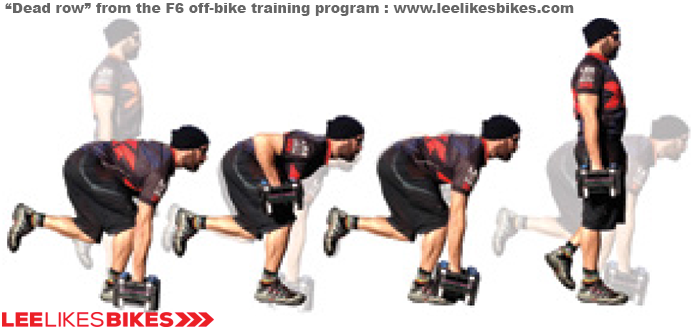
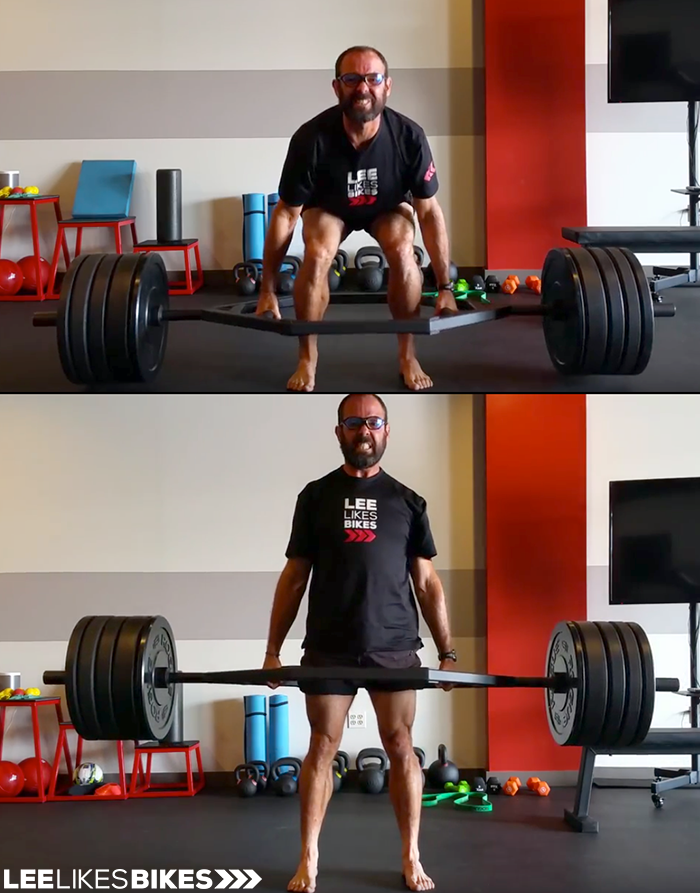
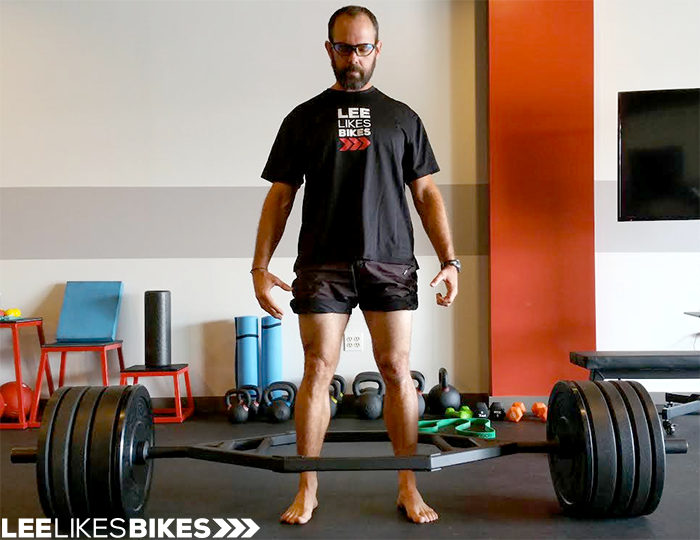
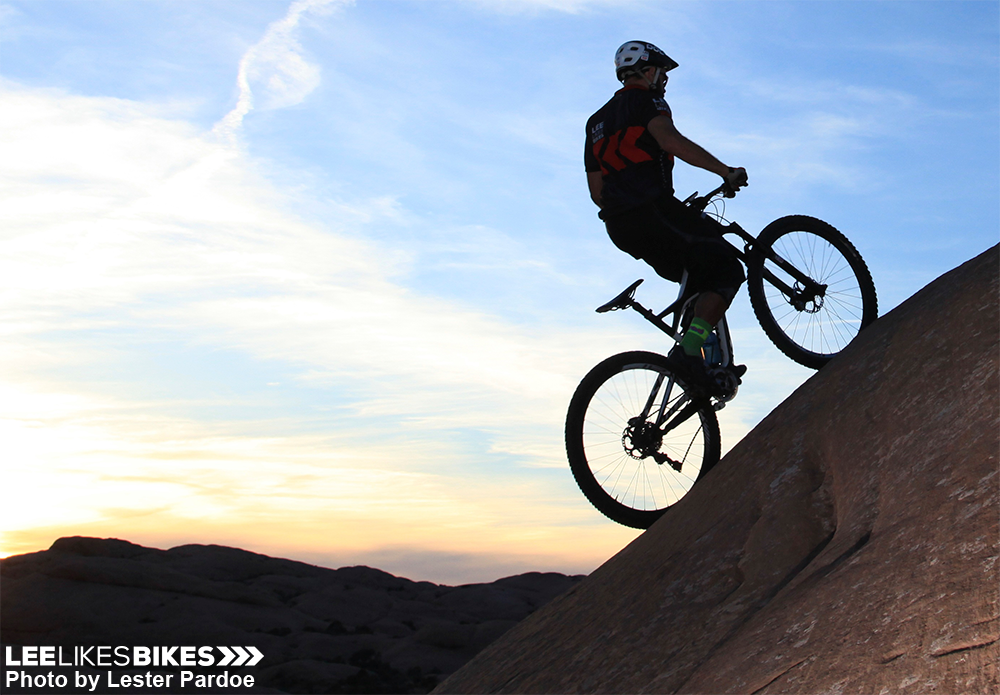
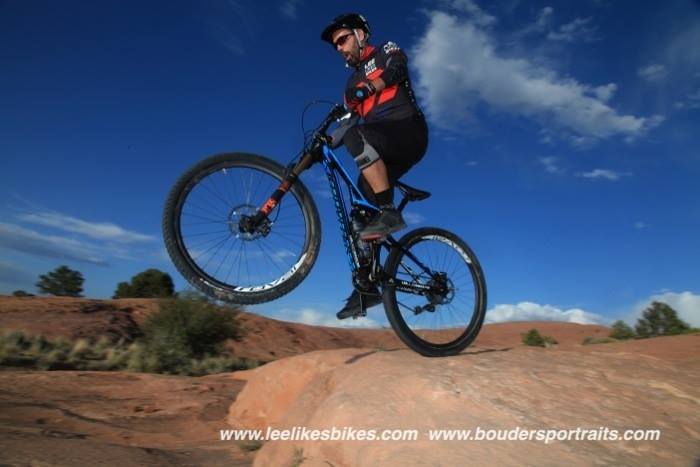
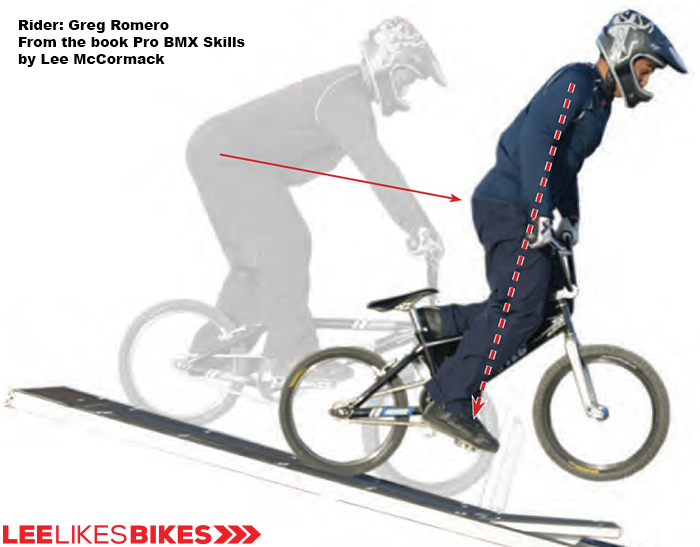
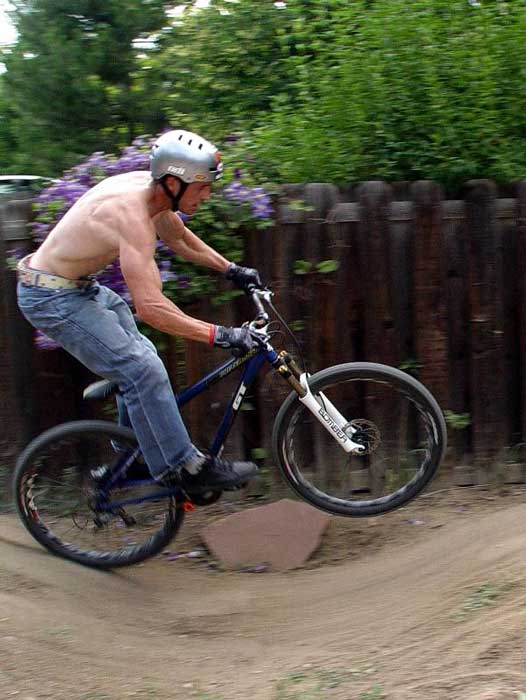
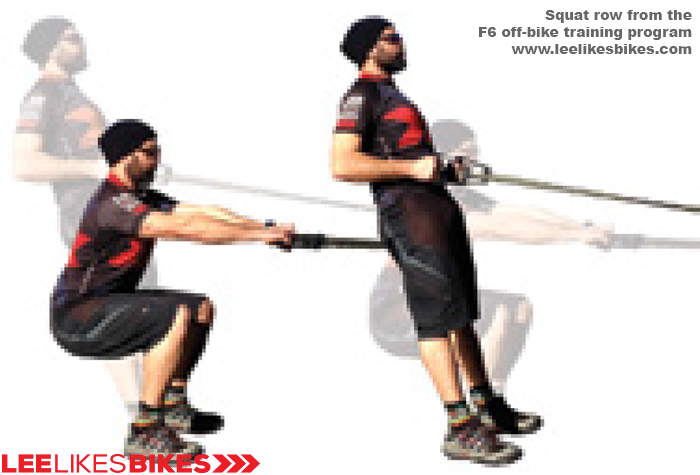
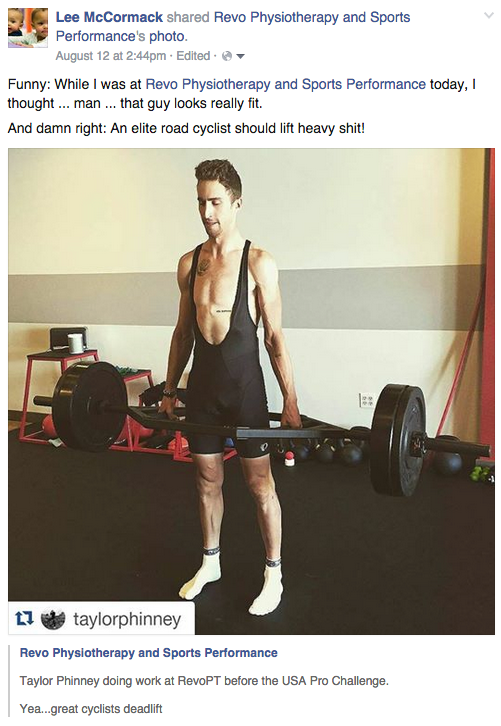
Leave a Reply
Want to join the discussion?Feel free to contribute!